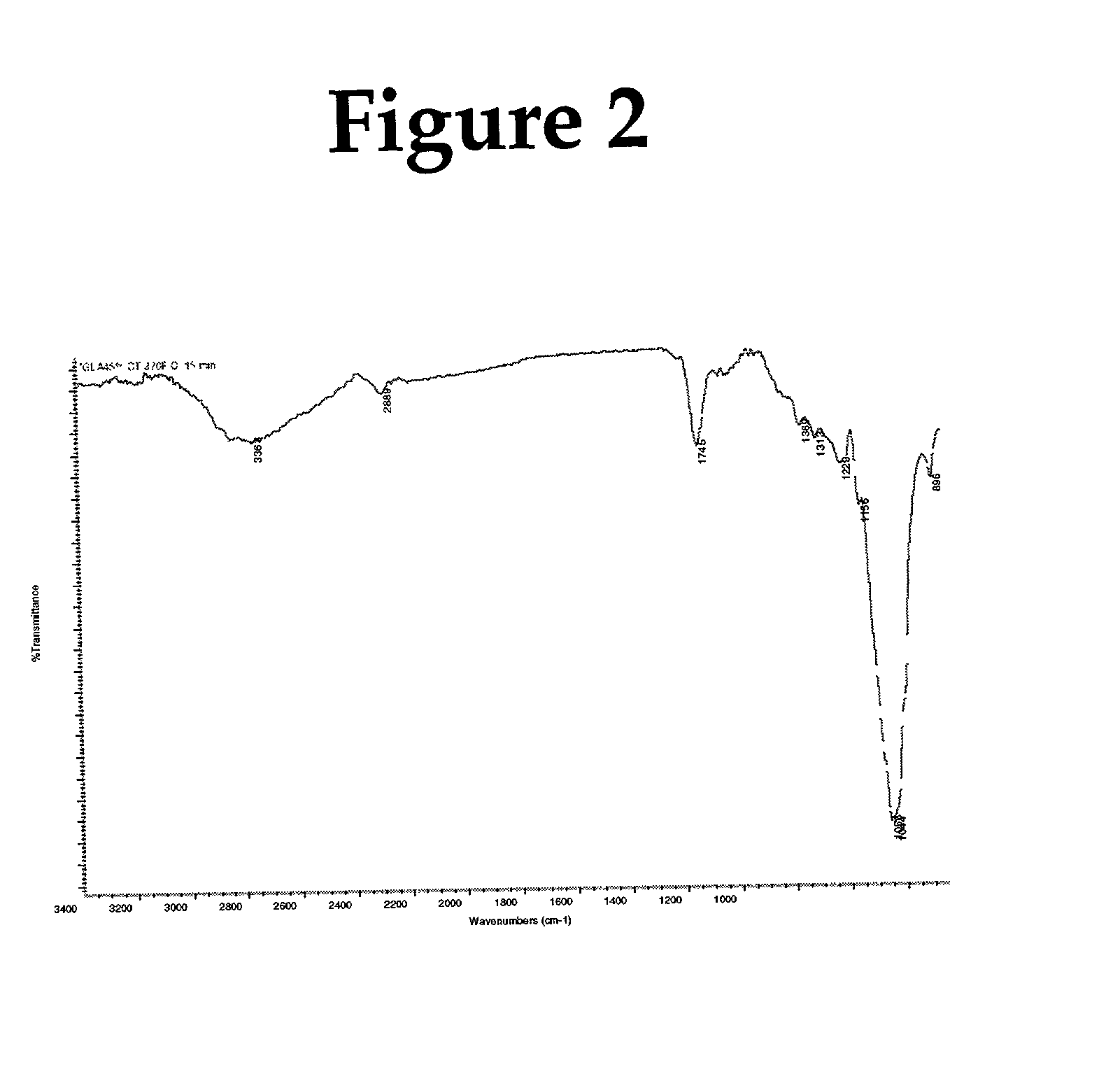Chemically cross-linked cellulosic fiber and method of making same
- Summary
- Abstract
- Description
- Claims
- Application Information
AI Technical Summary
Problems solved by technology
Method used
Image
Examples
example 1
[0105] This example illustrates a representative method for making caustic treated pulp and cross-linking it.
[0106] A sample of Rayfloc.RTM.-J-LD (never dried) was obtained as a 33.7% solid wet lap from a Rayonier mill at Jesup, Ga., and is an untreated southern pine Kraft pulp sold by Rayonier Performance Fibers Division, Jesup, Ga. and Fernandina Beach, Fla. for use in products requiring good absorbency, such as absorbent cores in diapers. A 70.0 g (dry weight basis) sample was treated with an aqueous solution of 16% (w / w) sodium hydroxide at a consistency of 3.5%. Treatment was carried out at room temperature for about 10 min, and excess NaOH was then removed by suction filtration or centrifuge. The resulting caustic treated pulp was washed with excess water, neutralized to a pH of 5.4 with acetic acid solution (0.01 M) at a consistency of about 3.5%. The pulp then was formed into a sheet (12.times.12 inch) and treated while in the wet state with a 4.5% aqueous solution of glyoxy...
example 2
[0107] This example illustrates the effect of curing time on absorbent properties of a representative cross-linked fiber formed in accordance with the present invention.
[0108] Fibers were caustic treated and cross-linked with glyoxylic acid as in example 1 above, except that the caustic treated sheet was dried in an oven at 60.degree. C. before treatment with glyoxylic acid (2.6%) solution. Final percentage of glyoxylic acid on fiber was 3% by weight, based on dry sheet weight. The results are shown in Table 2 below.
2TABLE 2 Absorbent properties of fiber cross-linked with glyoxylic acid (3%) at various curing time: Cure temperature 370.degree. F. Centrifuge Cure time Absorbency under Absorbent Free Swell Retention (min) Load (g / g) capacity (g / g) (g / g) (g / g) --.sup.1 10.0 0.97 .sup.2 8.6 10.2 21.5 0.72 3 8.5 9.9 22.0 0.51 5 8.4 9.9 22.4 0.51 10 8.5 10.1 22.0 0.50 .sup.1Mercerized pulp untreated with cross-linking agent glyoxylic acid. .sup.2No curing was carried out on this sheet, on...
example 3
[0110] This example illustrates the effect of increasing the amount of glyoxylic acid on absorbent properties of a representative cross-linked fiber formed in accordance with the present invention.
[0111] The pulp used in this example was Porosanier-J, which is commercially available from the Rayonier mill at Jesup, Ga., and was obtained in roll form. Five sheets (12.times.12 inch), each weighing about 70.0 g (dry weight base) were obtained from the roll. The sheets were treated with an aqueous solution of glyoxylic acid at room temperature and at various concentrations, and cured at 370.degree. F. for 15 min. The results are shown in Table 3 below.
3TABLE 3 Absorbent properties of fiber cross-linked with various amount of glyoxylic acid: Cure temperature 370.degree. F. for 15 min (includes drying) Absorbency Centrifuge % of glyoxylic under Load Absorbent Free Swell Retention acid on fiber (0.3 psi) (g / g) Capacity (g / g) (g / g) (g / g) 8.0 8.6 10.1 19.4 0.39 5.4 9.0 10.6 21.0 0.37 4.0 9.3...
PUM
| Property | Measurement | Unit |
|---|---|---|
| Length | aaaaa | aaaaa |
| Fraction | aaaaa | aaaaa |
| Fraction | aaaaa | aaaaa |
Abstract
Description
Claims
Application Information
 Login to View More
Login to View More - R&D
- Intellectual Property
- Life Sciences
- Materials
- Tech Scout
- Unparalleled Data Quality
- Higher Quality Content
- 60% Fewer Hallucinations
Browse by: Latest US Patents, China's latest patents, Technical Efficacy Thesaurus, Application Domain, Technology Topic, Popular Technical Reports.
© 2025 PatSnap. All rights reserved.Legal|Privacy policy|Modern Slavery Act Transparency Statement|Sitemap|About US| Contact US: help@patsnap.com



